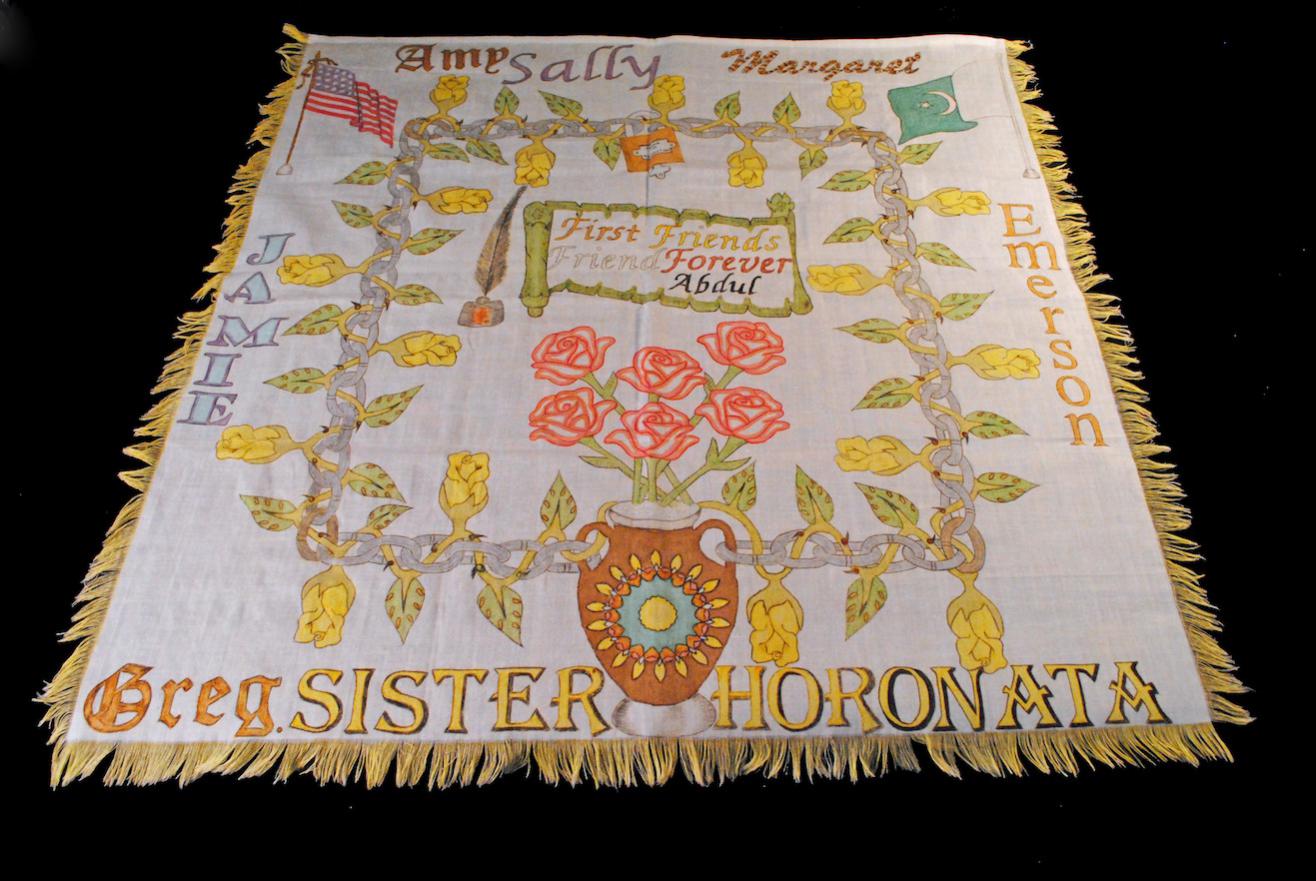
This bed sheet, decorated by an immigrant detainee, is dedicated to First Friends of NJ&NY. Credit: Photograph by Erin Donnelly and Kristyn Scorsone. Courtesy of: First Friends of NJ and NY
How Artwork Created Bonds Between Detainees and Advocates
Artwork filled an entire wall at the First Friends office. There were hand drawn images of religious figures, animals, and portraits. There were handmade necklaces, purses and wallets made of woven magazine pages. A finely crafted wallet made of a Doritos bag and carefully constructed picture frames made of milk cartons and Ramen Noodle wrappers sat on a shelf on another wall. In early October, we visited the immigrant detention advocacy organization, First Friends of NJ and NY, along with our professor, Mary Rizzo. As part of a course we were taking on mass incarceration at Rutgers-Newark and also in conjunction with a nationwide project designed by the Humanities Action Lab, we had set out to investigate immigrant detention in Elizabeth, New Jersey. By the time we made our way to the First Friends office, we had been reading about mass incarceration, immigrant detention, and the Esmor uprising of 1995 for nearly a month. We were ready to speak to someone at the grassroots level who could provide us with information about the conditions the detainees lived under in New Jersey.
The director of the organization, Sally Pillay, had worked closely with detainees and their families for years. As one of our community partners, First Friends was a window into the experience of immigrant detention in New Jersey. However, it wasn’t only what we heard during our visit to First Friends that shed light on the experiences of immigrant detainees. What we saw there was some of the most powerful material we had come across. The detail of the artwork as well as the emotions that they both expressed and evoked were remarkable. The collection was a striking deposit of not only history but also feelings. What we had encountered through the experience of listening to Sally and looking at the art collection was what cultural critic Ann Cvetkovich has termed an archive of feelings. According to Cvetkovich, an “archive of feelings gives us permission to turn down the volume on the voice of critique and pay attention to the strong feelings that get attached to things.” By the time we left the First Friends office, we weren’t completely sure where the project was headed but we had decided to create a photographic collection of the artwork to share digitally. A large part of our project has been an effort to untangle and make sense of the complex web of feelings attached to the art. Over the course of this project, we have learned that the story of the feelings attached to works of art are just as important as the artwork itself. Cvetkovich writes, “Unless we do radical kinds of recovery work around archives, and also grapple with profoundly absent archives—by acknowledging missing lives and missing feelings—we can't move forward.” With the belief that feelings matter, in this project we listened to the feelings that arise from ourselves, the artwork, and to our partners at First Friends.